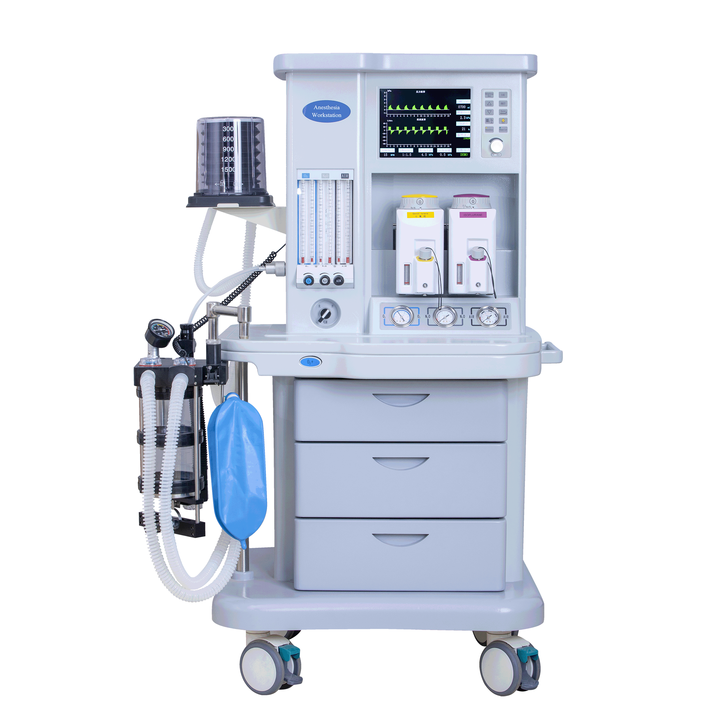Recently, high temperature weather around the world has occurred frequently
due to the greenhouse effect and the El Reno phenomenon. Excessive temperature
not only leads to a decrease in power generation, but also seriously affects the
operating state and service life of photovoltaic modules, causing the insulation
performance of photovoltaic modules, cables, inverters and other electrical
equipment to decline, which may lead to short circuits, fires, and fires.
Endanger personal safety and property safety.

SES Power has many products that are matched with photovoltaic modules,
inverters and other clean energy components to form a complete and independent
lithium-ion battery energy storage system, such as the use of high-quality
square aluminum shell lithium iron phosphate battery lead-acid replacement
Products (12V100Ah, 12V200Ah), UPS, high-voltage lithium battery system for
high-power inverter (up to 860V), 3Kw~20Kw off-grid, grid-connected lithium
battery energy storage system, cabinet battery system (standard 19 inches),
smart wall mount Lithium-ion energy storage system, stacked lithium-ion energy
storage system, etc. Therefore, we have rich resources and experience in
photovoltaic modules, inverters and other ancillary products. Let our senior
engineers answer your questions about the impact and potential dangers of high
temperature climate on PV modules and inverters.
A: The impact of high temperature on various equipment of photovoltaic
power plants
a1: The effect of high temperature on the performance and power generation
of photovoltaic modules
Many users have a misunderstanding: when there is plenty of sunshine in
summer, is the power generation of photovoltaic power plants higher?
The answer is no, because the amount of power generation of photovoltaic
power plants is not determined by the single factor of sunlight, but by many
factors, among which the more critical factors are irradiance and ambient
temperature. The first characteristic of hot summer is high temperature, but
high temperature does not mean high irradiance and high performance of solar
modules.
Photovoltaic cell is a semiconductor device with negative temperature
characteristics, the higher the temperature, the worse the power generation
performance. The power is measured under standard conditions of 25°C. When the
panel temperature of the photovoltaic module is as high as 75°C, the loss of
power generation due to high temperature will reach 10% to 20%.
Therefore, the peak power generation of photovoltaic power plants often
occurs in late spring and early summer or late summer and early autumn. At this
time, the ambient temperature is suitable and the irradiance is high, which can
achieve the best conditions for photovoltaic power generation.
a2: Excessive temperature will lead to failure of photovoltaic modules
The main packaging material for photovoltaic modules is EVA, a plastic that
melts at temperatures above 80°C. Since photovoltaic modules usually have a
certain inclination angle during installation, when the temperature of the
photovoltaic module panel is too high, the internal EVA melts, and the
photovoltaic cells will sag due to gravity.
If the module is not fixed properly during the packaging process or the
internal fixation fails due to high temperature, internal short circuit, open
circuit and other faults will occur due to cell displacement and other reasons,
resulting in the module not working properly or damaged.
a3: Long-term high temperature accelerates the attenuation of photovoltaic
cells
The high operating temperature of the cells will also aggravate various hot
spots, resulting in permanent deterioration or damage to the power generation
performance of the cells.
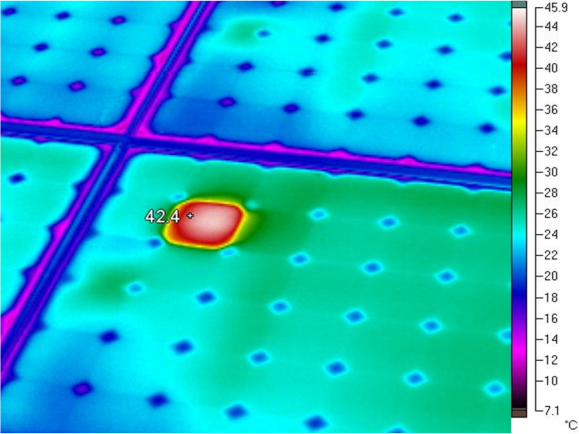
B: Influence of high temperature on cable and electrical insulation
High temperature has a direct negative impact on the performance and life
of insulating materials. Whether it is enameled wire of coils such as motors,
transformers, and inductors, or wires and cables such as various plastic wires,
they have limited resistance to high temperature. Excessive working temperature
will lead to problems such as the decline of insulation performance, and in
serious cases, it will lead to insulation collapse, causing short-circuit
explosion or fire.
C: Influence of high temperature on electronic equipment such as
inverters
c1: The photovoltaic power station has electronic equipment such as
inverters, which contain a large number of ordinary electronic components,
integrated circuits and high-power switching transistors. Usually, the working
temperature range of civil-grade electronic components is -35℃~70℃, and the
working temperature of most photovoltaic inverters is -30~60℃. Beyond this
operating temperature range, both ordinary electronic circuits and integrated
circuits will enter an unstable state. This state will lead to circuit equipment
shutdown in light, and serious circuit logic confusion and equipment damage.
c2: There will be a large number of electrolytic capacitors in the
photovoltaic inverter. At the same time, in order to stabilize the voltage of
the photovoltaic input terminal and prevent interference, there are usually
large-capacity electrolytic capacitors in varying numbers. These capacitors are
very afraid of high temperature, and high temperature will make the capacitors.
The internal electrolyte gradually volatilizes, resulting in a decrease in the
capacitance of the capacitor or even scrapping.
c3: The high-power thyristor in the photovoltaic inverter is also a device
that is sensitive to high temperature. Excessive temperature will affect the
correct operation and service life of the high-power thyristor. Excessive
temperature will cause the high-power thyristor to burn out.
D: The effect of high temperature on photovoltaic connectors
International standard MC4 connectors are widely used for the connection
between photovoltaic power generation components and component strings, as well
as the DC terminal connection of combiner boxes, inverters and other
components.
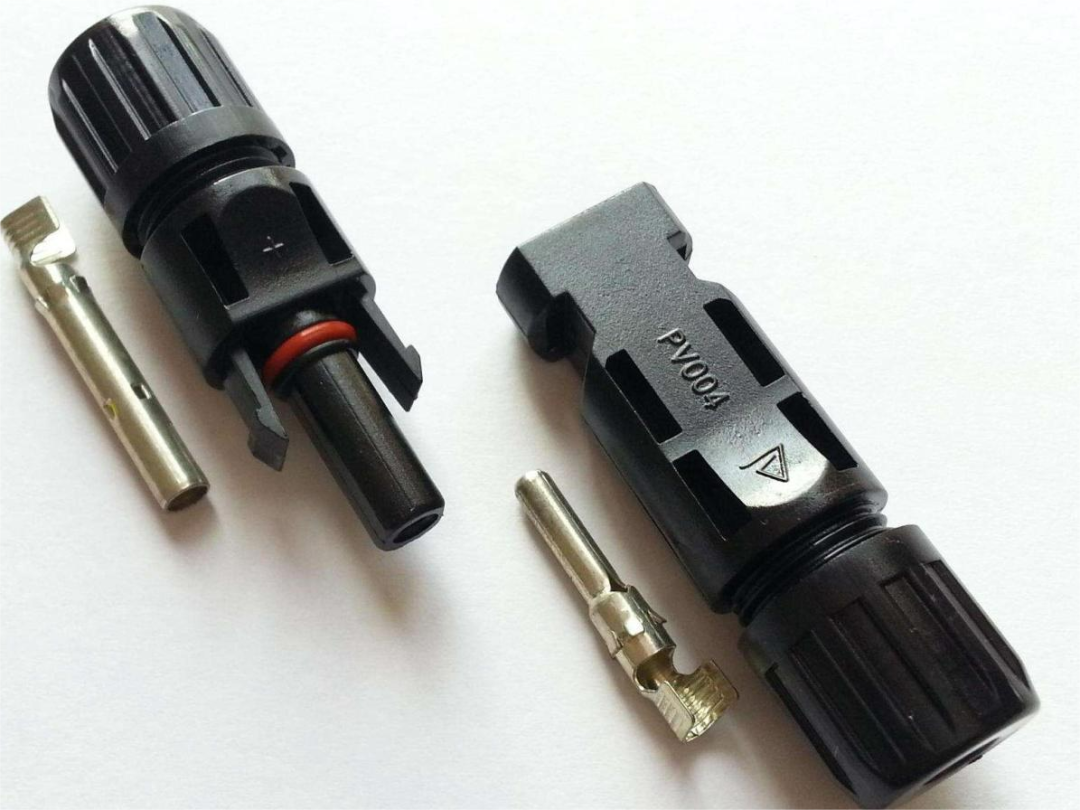
The MC4 connector is a single-core connector, which has many advantages
such as good sealing, convenient connection, convenient maintenance and
maintenance. But it also has defects such as being afraid of high temperature,
easy to age, and afraid of rain. During the installation and use of component
connectors, avoid exposure to sunlight, high temperature, rain, etc., so as to
avoid aging of the connectors, corrosion of internal connectors, and cables,
resulting in increased contact resistance, or even ignition, resulting in a drop
in system efficiency or a fire accident.
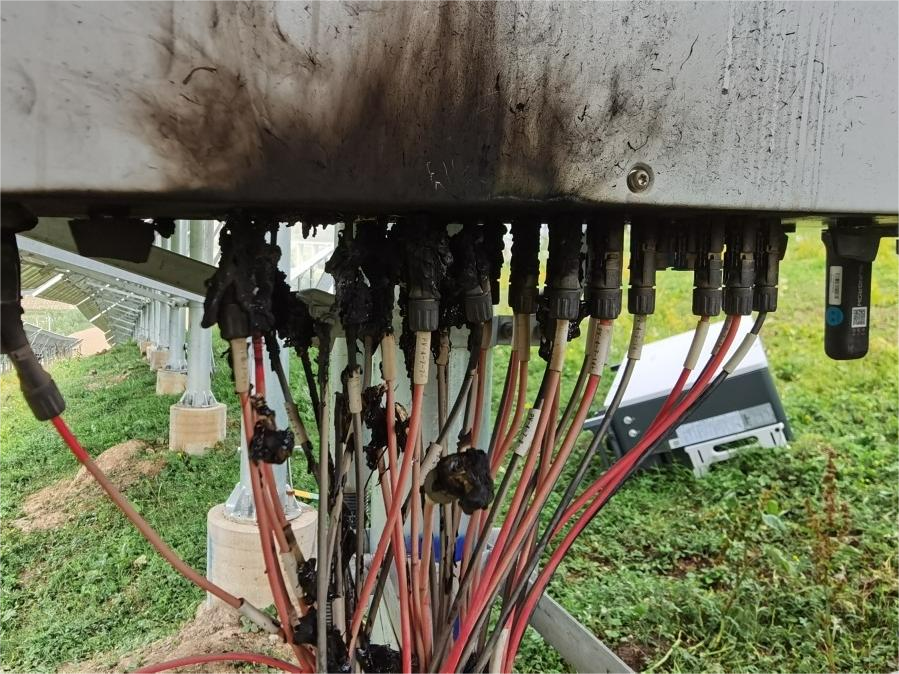
In a small-scale photovoltaic power station, there are usually hundreds of
such connectors. The poor working condition of any one of them will affect the
increase of the internal resistance of the DC side, resulting in a decrease in
the power generation efficiency of the power station. The poor contact will
cause the connector to heat up or even burn the connector, which will lead to
the burning of the combiner box and the inverter, and even lead to a large-scale
fire.
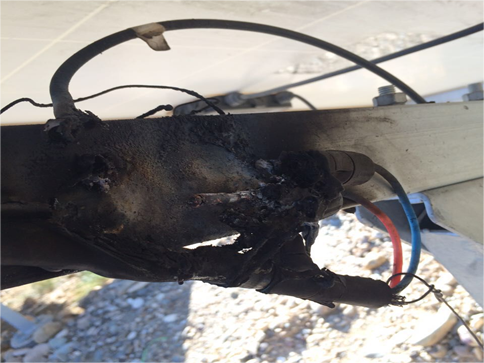
E: How to ensure the efficient work of the inverter?
e1: Ensure air circulation
Ensure smooth air circulation around the inverter. Do not install the
inverter in a small and closed environment. If multiple inverters are installed
on the same plane, it is necessary to ensure that there is enough distance
between each inverter. This not only It can ensure the ventilation and heat
dissipation of the inverter, and there is enough operating space for later
maintenance.
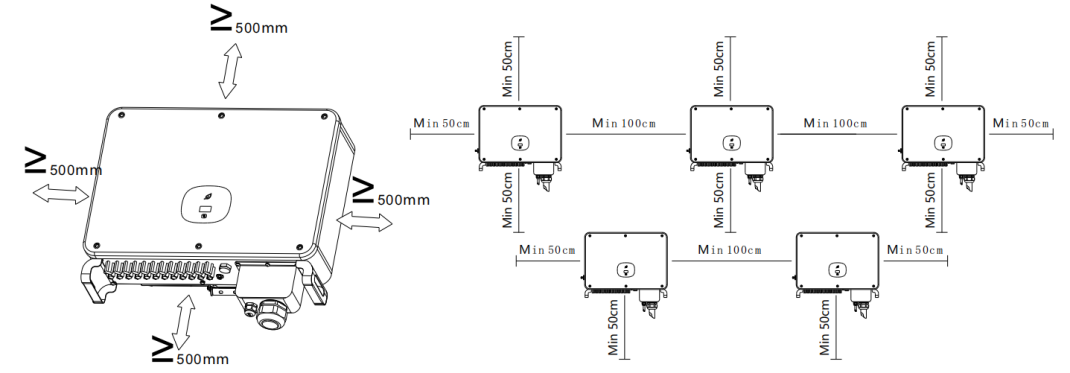
(Diagram of the distance between multiple inverters)
e2: Avoid the wind and the sun
Secondly, although many brands of inverters choose the protection level of
IP66 or IP65, it can reduce the chance of the inverter being exposed to wind,
sun and rain, which can prolong the service life of the inverter.
When installing the inverter, you can choose to install it at the bottom of
the module or under the eaves. If the inverter is installed on the roof of the
color steel tile, it is recommended to install the awning synchronously, which
can not only shelter from the wind and rain, but also reduce the direct
sunlight, reduce the temperature of the inverter, and ensure the power
generation efficiency.
e3: Pay attention to post-maintenance
After the inverter is installed, it is necessary to pay attention to the
later maintenance: regularly clean the fan, fan cover or heat sink to ensure the
heat dissipation and cooling of the inverter.
Usually, the inverter cooling technology adopts intelligent air cooling
technology, and the fan will intelligently adjust the speed according to the
internal temperature of the inverter. When the inverter works in a high
temperature environment, the intelligent air cooling technology can effectively
reduce the probability of load reduction and ensure that the The inverter can
run stably while extending the service life of the fan.
In addition, the inverter has a fan fault alarm function. The operation and
maintenance personnel can receive the alarm information in the monitoring
background, quickly and accurately locate the fault, which is convenient for the
operation and maintenance personnel to eliminate the fan fault in time, reduce
the power generation loss, and ensure the power generation income.
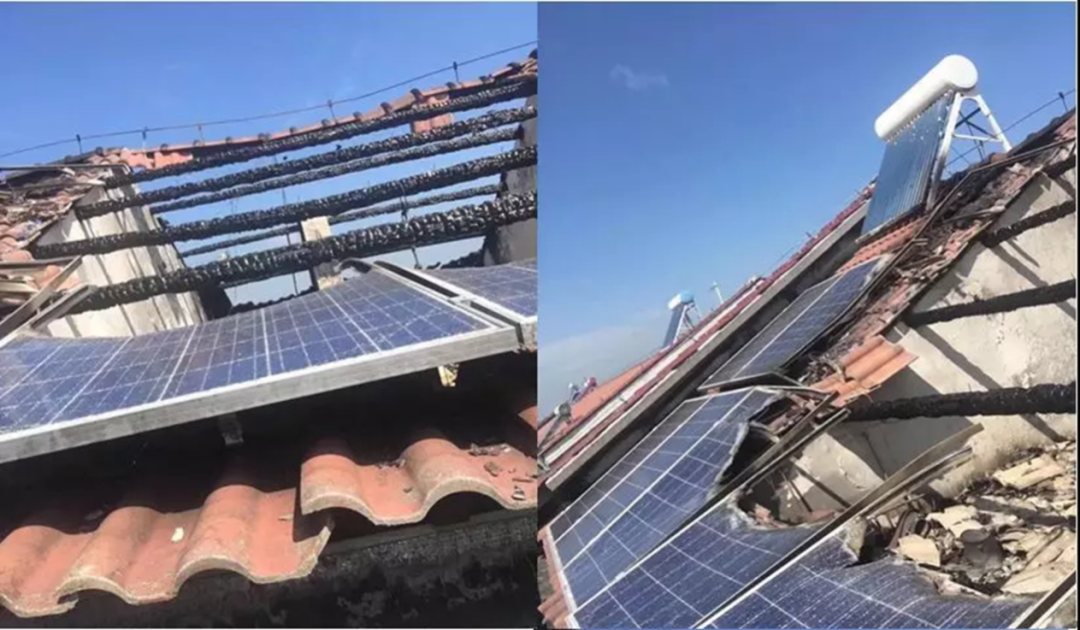
F: What should I do if photovoltaic modules, inverters, and lithium-ion
energy storage systems catch fire?
In the event of a fire accident in these devices, the energy inlet should
be closed first, the AC power supply should be cut off, and the various
connection circuits of the components should be disconnected as soon as possible
to ensure the safety of firefighting personnel and control the fire in the later
stage.
Firefighters must wear insulating shoes when entering the scene of an
accident, and insulating gloves when touching the equipment shell and frame. For
10-35kV high-voltage electrical fires, keep the minimum distance between the
fire extinguisher nozzle and the charged body should not be less than 0.4-0.6m.
Do not touch the body or the fire extinguisher in your hands with live wires or
electrical equipment to prevent electric shocks during firefighting.
Electrical fire extinguishers should use dry powder fire extinguishers,
carbon dioxide, 1211, carbon tetrachloride fire extinguishers or dry sand, etc.
Water and foam fire extinguishers are strictly prohibited.

G: SES Power wrote the last words
The high temperature in summer is not only unbearable, but also affects the
work efficiency of photovoltaic power plants, lithium-ion energy storage
systems, inverters, etc., and even brings many unsafe and uncertain hidden
troubles. We recommend that you try to ensure that the photovoltaic power
station array is not partially shaded, that the inverter and other electrical
equipment are not exposed to sunlight, that the ventilation is good, and that
you closely observe the temperature rise of every important link including the
lithium-ion energy storage system.
If you have questions about clean energy such as photovoltaic power
generation, inverters, lithium-ion energy storage systems, etc., you are welcome
to contact us, and we will serve you sincerely with our nearly 20 years of
experience.

















